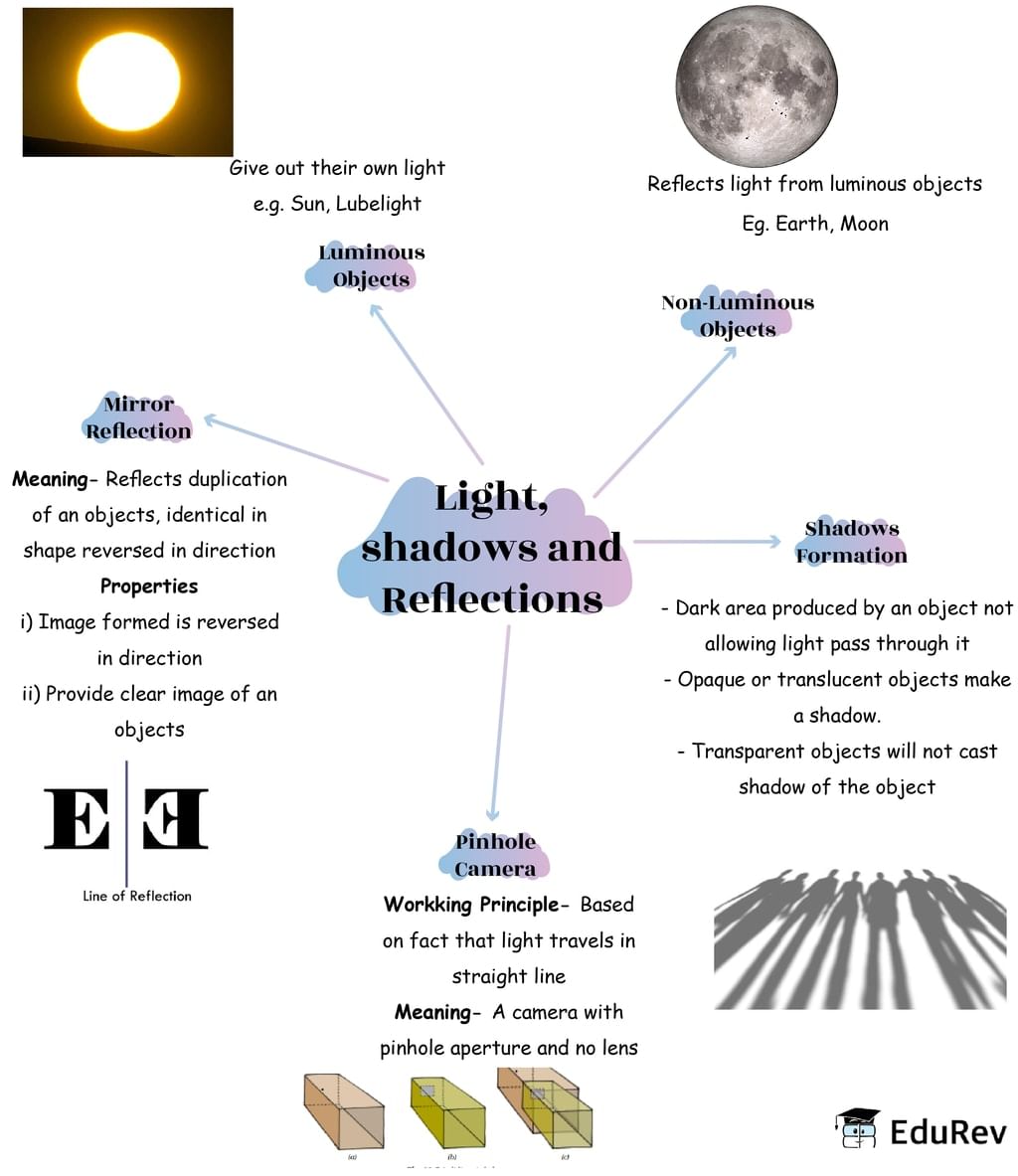Class 6 Exam > Class 6 Notes > Subject-Wise Mind Maps for Class 6 > Mind Map: Light, Shadows and Reflection
Mind Map: Light, Shadows and Reflection | Subject-Wise Mind Maps for Class 6 PDF Download

The document Mind Map: Light, Shadows and Reflection | Subject-Wise Mind Maps for Class 6 is a part of the Class 6 Course Subject-Wise Mind Maps for Class 6.
All you need of Class 6 at this link: Class 6
FAQs on Mind Map: Light, Shadows and Reflection - Subject-Wise Mind Maps for Class 6
| 1. What is light and how does it travel? |  |
Ans. Light is a form of electromagnetic radiation that can be perceived by the human eye. It travels in straight lines called rays, which move at a speed of approximately 300,000 kilometers per second.
| 2. What are shadows and how are they formed? |  |
Ans. Shadows are formed when an opaque object blocks the path of light. The area behind the object, where light cannot reach, appears darker in comparison to the surrounding areas. Shadows are created due to the absence of light in that particular region.
| 3. How does reflection of light occur? |  |
Ans. Reflection of light occurs when light rays bounce off a surface and change direction. The angle at which the light ray strikes the surface is equal to the angle at which it reflects. This phenomenon allows us to see objects indirectly, as light reflects off them and enters our eyes.
| 4. What is the difference between specular and diffuse reflection? |  |
Ans. Specular reflection occurs when light rays bounce off a smooth surface, such as a mirror, and create a clear and sharp reflection. Diffuse reflection, on the other hand, happens when light rays reflect off a rough or uneven surface, scattering in various directions and creating a diffused reflection.
| 5. How does the color of an object affect its reflection and absorption of light? |  |
Ans. The color of an object determines which wavelengths of light it reflects and absorbs. For example, a red object appears red because it reflects red light and absorbs other colors. Similarly, a blue object reflects blue light and absorbs other colors. The reflection and absorption of light by an object's surface determine its perceived color.
Related Searches

















